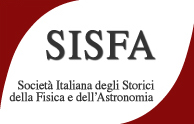Speaker
Description
The cooperative endeavors that permeate modern science, especially following its remarkable expansion in the twentieth century, have become a focal point of discussion in the history and philosophy of science. In this paper, I apply the joint commitment model—a prominent framework in the social epistemology of groups and the organization of their cognitive labor—to nuclear fusion research.
Unlike personal commitments, which individuals can rescind at will, joint commitments, formed by plural subjects, are not easily dissolved and typically require collective agreement to be revoked. Margaret Gilbert has extended this framework to scientific communities, arguing that here joint commitments primarily concern the shared beliefs of the plural subjects involved, thus reinforcing epistemic cohesion and enabling research programs to advance. This model explains both the stability of scientific consensus and the role of dissenters in driving change. Scientists who deviate from group beliefs — “free riders” — navigate strategic risks, balancing potential gains, career implications, and the influence of competing groups against the costs of nonconformity. In this way, the model captures the tension between conformity and the disruptive potential of individual actors.
In this talk, I argue that, contrary to Gilbert’s account, the joint commitment model is insufficient as a general explanation of scientific change. However, I suggest that it remains useful for analyzing smaller scientific communities, such as research collaborations, if its focus is reframed. Specifically, I challenge the emphasis on shared beliefs in Gilbert’s model and propose an operationalization using a distant reading approach consisting of a keyword search strategy across a database that collects papers in nuclear fusion research from 1979 to 2001. I then outline a method for making joint commitments within research groups measurable, providing a concrete framework for understanding key dynamics of scientific collaboration.

